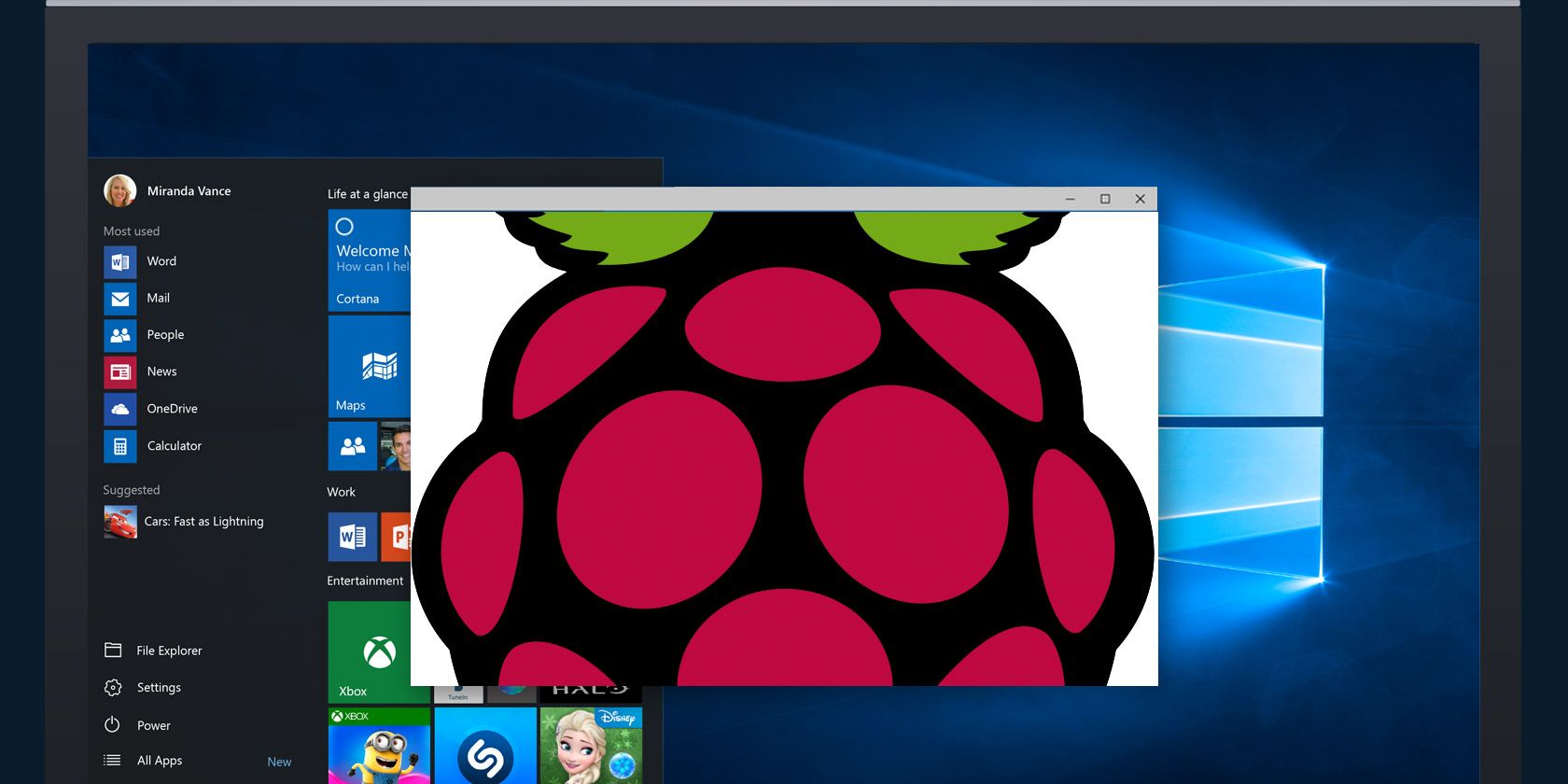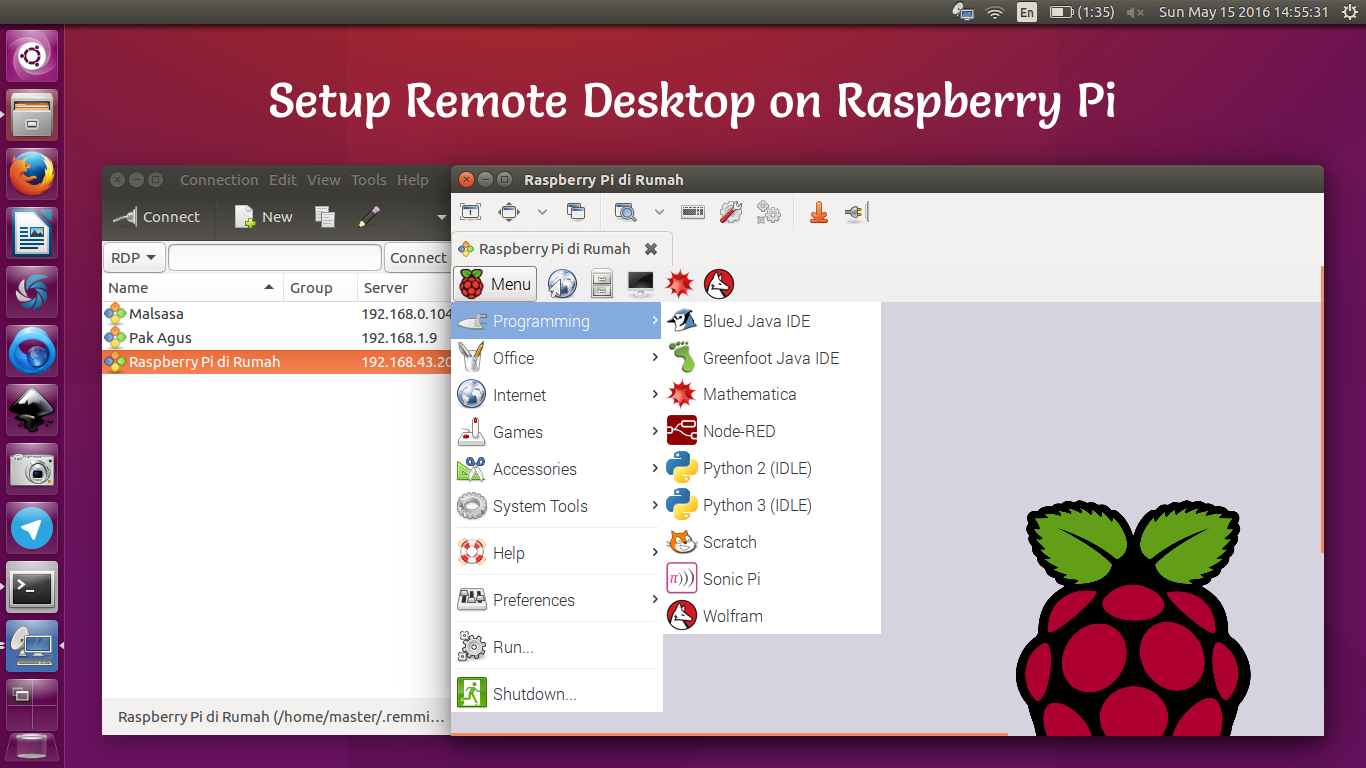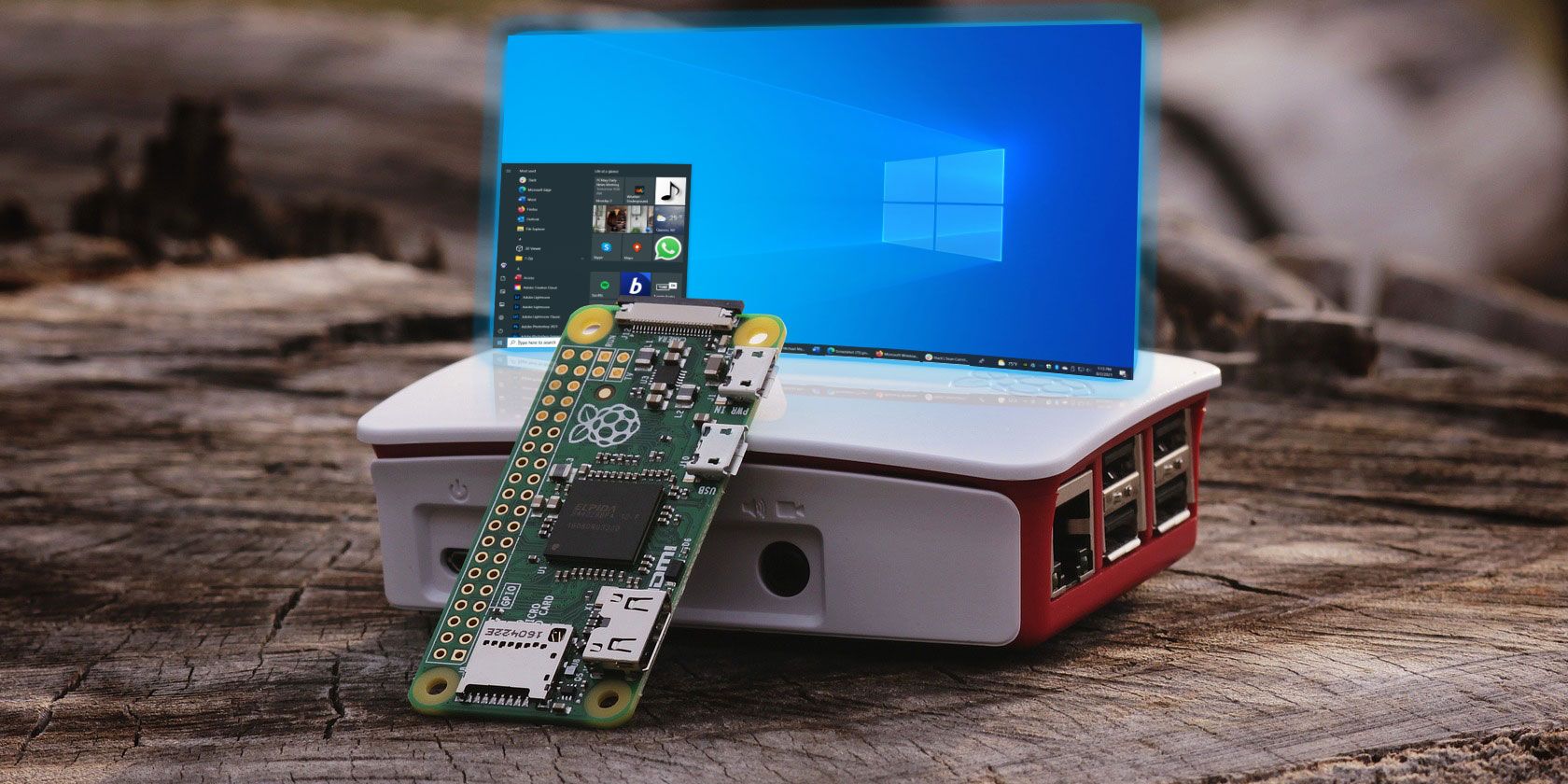Remote Raspberry Pi Management Platform Free Download - Your Guide
For anyone who has a Raspberry Pi or two, or maybe even a whole bunch of them, you might be thinking about how to keep an eye on them and manage them without having to be right there next to them all the time. It's a pretty common thought, actually, especially when your little computers are tucked away in places you can't easily reach, or if you're just busy with other things. Finding a good way to handle them from afar, you know, makes life a bit easier.
There are quite a few ways folks try to connect to their Pis, from simple command lines to more involved setups. But what if you're looking for something that brings everything together, something that lets you see what's happening, send commands, and even update things, all from a distance? That's where a dedicated remote management platform can come into play, offering a central spot for all your Pi needs.
And the best part, arguably, is that you don't always have to spend money to get a useful tool for this. Just like people look for ways to manage their daily computer tasks without a big cost, the same idea applies to these small devices. There are options out there that won't ask for your wallet, giving you a chance to try things out and get comfortable with remote control, you know.
- What Happened To Rylie Rowan
- Trinity Rodman Sports Achievements
- Baddies Free
- Jaimie Smiles Bio
- Is Harry Enten A Father
Table of Contents
- What's the Big Deal About Remote Raspberry Pi Management?
- Finding Your Free Remote Raspberry Pi Management Platform
- What Should You Look for in a Free Remote Raspberry Pi Management Platform?
- Are There Any Hurdles with a Free Remote Raspberry Pi Management Platform?
- Setting Up Your Chosen Remote Raspberry Pi Management Platform
- Tips for Smooth Remote Raspberry Pi Management
- Sharing Experiences with Remote Raspberry Pi Management Platform Free Download
- The Future of Remote Raspberry Pi Management Platform Free Download
What's the Big Deal About Remote Raspberry Pi Management?
Having a Raspberry Pi is pretty cool, isn't it? People use them for all sorts of things, from building little robots to setting up home servers or even just learning about computers. But as soon as you start using more than one, or if your Pi is sitting somewhere like a shed or a server closet, going to it every time you need to do something becomes a real bother. This is where managing it from a distance really helps, you know. It means you can check on its status, change settings, or even install new programs without having to move from your comfy chair. It's a bit like being able to control a tiny computer from anywhere with an internet connection, which is pretty neat.
Think about it this way: if you're trying to set up a new project, or if something goes wrong, you don't want to spend ages just getting to the device. A good remote management setup lets you quickly hop on, see what's what, and fix things up. For folks who are learning, it also means they can mess around with their Pi even when it's in another room, which, honestly, is a huge convenience. So, it's about making your Pi projects more accessible and less of a chore to look after.
This kind of access can really open up what you can do with your Pis. It's not just about fixing problems; it's about being able to work on your projects from anywhere, whether you're at home, at a coffee shop, or even visiting family. You might be wondering, too, how much effort it takes to get this kind of setup going, especially if you're trying to keep costs down. Luckily, there are ways to do it without spending a lot of cash, which is what we're going to talk about.
- Iconic Barbie Outfits
- Vivienne Jolie Pitt
- Is Zoe Mclellan Alive
- Reality Television
- Rachael Rays Personal Life
Finding Your Free Remote Raspberry Pi Management Platform
So, you're on the hunt for a way to manage your Raspberry Pis from a distance without spending any money, right? It's a common desire, sort of like when you're looking for a new job and hoping to find a good fit without having to pay for access to job boards. The good news is, there are some decent options out there that won't cost you anything. It might take a little bit of looking around, but they do exist. Some people start by checking out community forums or places where other Pi users share their experiences, which, honestly, can be a great way to find out what's working for others.
You'll often find that many open-source projects offer exactly what you need. These are programs made by people who believe in sharing their creations freely, and they can be quite powerful. They might not always have all the bells and whistles of a paid service, but for basic monitoring and control, they often do the trick. You might need to put in a little bit of effort to set them up, but the payoff is a free tool that gives you a lot of control over your devices. It's really about finding what fits your particular situation.
When you're searching, you'll see various names pop up. Some are simple command-line tools, while others offer a more visual way to interact with your Pis. It's a bit like trying different kinds of remote access software for your main computer; some feel better than others. The key is to find something that feels right for you and your comfort level with setting things up. You know, sometimes the simplest solution is the best, especially when it's free.
What Should You Look for in a Free Remote Raspberry Pi Management Platform?
When you're checking out different free remote Raspberry Pi management platform options, what sorts of things should you really pay attention to? It's a bit like choosing any new tool; you want it to do what you need it to do, and do it well. First off, think about what you actually want to do with your Pis from afar. Do you just need to see if they're on and running? Or do you want to be able to send commands, transfer files, or even update the operating system? Different platforms offer different features, so knowing your needs helps narrow things down, you know.
Another thing to consider is how easy it is to set up. Some free tools might require a bit more technical know-how to get going, while others are pretty straightforward. If you're new to this, a simpler setup might be better. Also, think about how it handles security. Since you're accessing your Pis from a distance, you want to make sure your connection is safe and that no one else can get in. This is a pretty big deal, actually, for any remote access system.
Finally, look at the community around the platform. Is there a place where you can ask questions if you get stuck? Are there guides or tutorials available? A good community can make a huge difference, especially with free software, as it often means there's help available if you run into a snag. Some platforms might not offer things like remote printing, which might be a concern for some end users, but for many tech-focused tasks, it's not a deal-breaker. It really just depends on what you need.
Are There Any Hurdles with a Free Remote Raspberry Pi Management Platform?
So, while free remote Raspberry Pi management platform options are great, are there any tricky bits you might run into? Yes, sometimes there are, just like with anything that doesn't cost money. One thing you might notice is that some free tools might not have all the fancy features you'd find in a paid service. For example, you might not get dedicated customer support, so if something goes wrong, you'll likely be relying on online forums or your own problem-solving skills. This is pretty typical for free software, you know.
Another potential hurdle could be the setup process itself. Some free platforms might require you to do a bit more manual configuration, or they might not have a super polished user interface. This isn't always a problem, especially if you're comfortable with a bit of tinkering, but it's something to be aware of. It's a bit like when you're looking for alternatives to a specific remote desktop program; sometimes the free options require a little more effort to get just right.
Also, updates and ongoing development might be less frequent with some free tools compared to commercial ones. This isn't always the case, as many open-source projects are very active, but it's something to keep in mind. You might find yourself needing to manually check for new versions or fixes. However, for many personal projects or small setups, these little challenges are often outweighed by the benefit of not having to pay for the software, which, honestly, is a big plus for many people.
Setting Up Your Chosen Remote Raspberry Pi Management Platform
Once you've picked a free remote Raspberry Pi management platform, the next step is getting it all set up. This part can feel a little bit like putting together a new piece of furniture; you follow the instructions, and hopefully, everything fits. Generally, you'll start by making sure your Raspberry Pi is connected to the internet and has its operating system all ready to go. Then, you'll usually need to install some software on the Pi itself. This might involve typing a few commands into the terminal, which, honestly, is not as scary as it sounds once you get the hang of it.
After the software is on your Pi, you'll often need to set up a way for your other computer or device to talk to it. This could mean installing a client program on your laptop or simply opening a web page. You'll likely need to create some login details to keep things secure, which is very important. It's a bit like setting up your Windows 10 Pro laptop for online classes, where you need to get all the virtual environments ready; there are steps to follow to make sure everything connects properly.
Some platforms might ask you to configure network settings, like port forwarding on your router, especially if you want to access your Pi from outside your home network. This can be a bit more involved, but there are usually plenty of guides online to help you through it. Just take your time, follow the steps carefully, and you should be able to get your remote management system up and running. You know, it's pretty satisfying when it all clicks into place.
Tips for Smooth Remote Raspberry Pi Management
To make sure your remote Raspberry Pi management experience goes as smoothly as possible, there are a few little things you can do. First off, always keep your Pi's operating system and any installed software up to date. This helps with security and makes sure everything runs well. It's a bit like making sure your main computer's programs are current; it just helps avoid problems, you know. Regular updates can fix issues and even bring new features to your free remote Raspberry Pi management platform.
Another good tip is to use strong, unique passwords for all your remote access points. This is super important for keeping your Pis safe from unwanted visitors. Think of it like locking your front door; you want to make it hard for anyone to get in who shouldn't be there. Also, consider setting up a static IP address for your Pi if you can. This means its network address won't change, making it easier to connect to consistently without having to search for it every time.
Finally, it's a good idea to have a backup plan. What if your remote connection fails? Can you still get to your Pi if you absolutely have to? Maybe have a keyboard and monitor handy for those rare times you need to be right there. Sharing your experiences and asking others for advice, much like people do when discussing efficient remote PC access software, can also be really helpful. You can learn a lot from what others have tried and what has worked for them.
Sharing Experiences with Remote Raspberry Pi Management Platform Free Download
When it comes to using a free remote Raspberry Pi management platform, talking about your experiences with others can be really beneficial. Just like people in online groups share tips and tricks about working from a distance or finding remote jobs, the Pi community is full of folks who are happy to help and learn from each other. If you find a particular free platform that works really well for you, sharing that information can help someone else who's looking for a solution, you know.
You might have run into a specific issue, perhaps something like how certain free tools handle file transfers, or if they have particular limitations. Discussing these things can help others avoid the same problems or find workarounds. It's a bit like when someone asks for an alternative to a specific remote desktop tool and others chime in with their suggestions; everyone benefits from the shared knowledge. This kind of exchange is really what makes the free software community so strong.
Conversely, if you're struggling to find a free option that meets your needs, or if you're having trouble setting something up, reaching out to the community can often provide the answers you're looking for. People are often willing to provide reasons for their choices or explain how they got something to work. So, don't be shy about asking questions or sharing your own discoveries; it helps everyone, which, honestly, is a great feeling.
The Future of Remote Raspberry Pi Management Platform Free Download
Looking ahead, the world of remote Raspberry Pi management platform free download options seems pretty promising. As more people get their hands on these little computers and use them for increasingly complex projects, the demand for easy, free ways to manage them from afar will only grow. This means that existing open-source projects are likely to keep getting better, with new features and improved usability being added over time. You know, things tend to improve when more people get involved.
We might see more platforms that are even simpler to set up, perhaps with web-based interfaces that don't require much technical knowledge at all. This would be a big help for those who are just starting out with Pis or who simply want a quick and easy way to keep an eye on their devices. It's a bit like how virtual desktop solutions are becoming more accessible; the goal is to make things easier for everyone, which is really good.
Also, as the Raspberry Pi itself becomes more powerful, the remote management tools will need to keep up. We could see more advanced features, like better monitoring of system resources or even ways to deploy code to multiple Pis at once, all from a free platform. The community spirit behind these free tools means that innovation often happens quickly, driven by the actual needs of users. So, it's exciting to think about what new possibilities might come next for managing your Pis from anywhere.
So, we've gone over quite a bit about managing your Raspberry Pis from a distance without spending a penny. We talked about why it's such a helpful thing to do, how to go about finding a free remote Raspberry Pi management platform, and what sorts of features you might want to look for. We also touched on some of the little challenges you might face with free options and shared some thoughts on getting your setup going smoothly. Remember, too, that sharing your experiences and learning from others in the community can really make a difference. The future looks bright for these kinds of tools, with more improvements likely on the way.

How to Run a Remote Desktop on Raspberry Pi with VNC

Free Remote Raspberry Pi Management Platform: Your Ultimate Guide

How to Install Windows 10 and 11 on a Raspberry Pi 4 the Easy Way